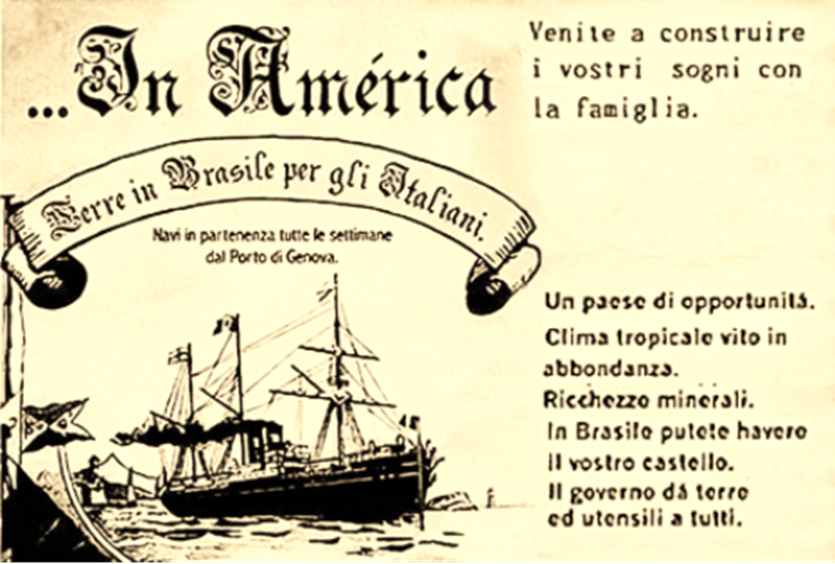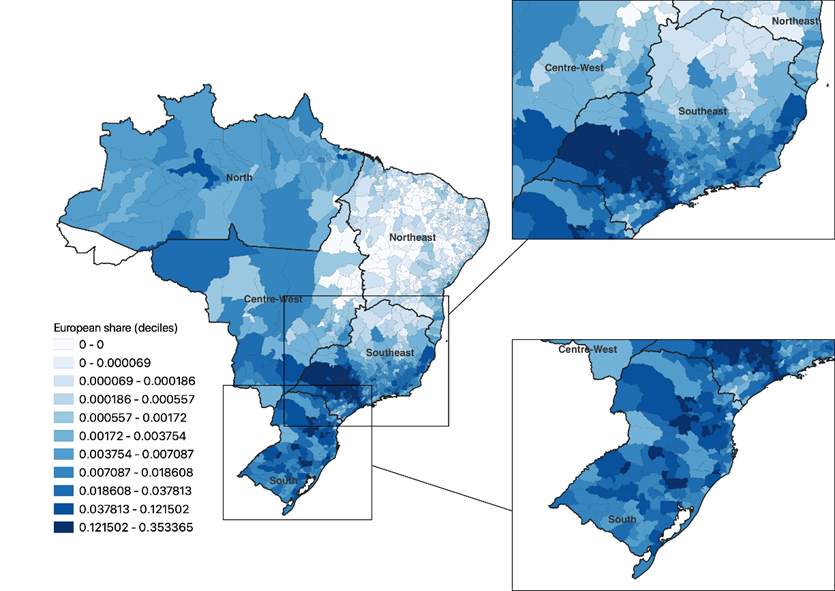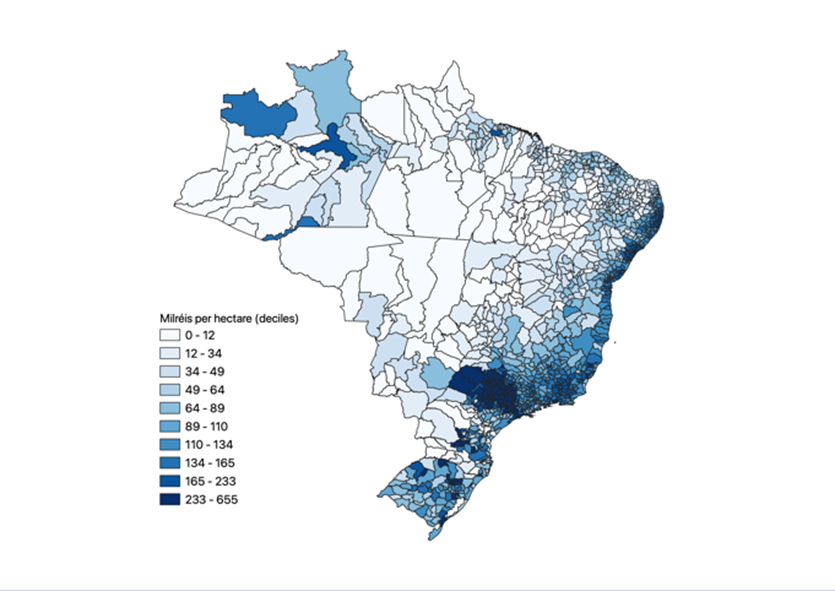
Immigration can foster agricultural development while accelerating, rather than delaying, structural transformation in developing economies.
Although developing countries host over 40% of global migrants today (World Bank 2016), our understanding of the effects of immigration to these countries is limited. Historically, research has focused on immigration to rich countries, overlooking the importance of other migrations (Ratha and Shaw 2007). Moreover, research on immigration to developing countries has largely focused on the effects of refugee flows, as opposed to economic migration. This leaves policymakers with limited evidence on the impact of voluntary migration in developing economies (Cortes 2004, Dustmann et al. 2017, Engler et al. 2023). This evidence gap is especially concerning given the increasing migration between developing countries, driven by economic opportunity and regional integration.
Learning from history: Brazil in the Age of Mass Migration
To shed light on this issue, we study Brazil during the Age of Mass Migration (1850-1920), a period in which approximately 3.5 million Europeans migrated to Brazil (Escamilla-Guerrero et al. 2024) as part of a broader movement of approximately 50 million Europeans to the Americas. Studying this period is valuable to understanding the economics of migration due to its scale, easily available data and the absence of policy barriers that might make it harder for researchers to make causal claims (Abramitzky and Boustan 2017, Abramitzky et al. 2023, Tabellini 2020).
Two key features characterised immigration to Brazil during this period: subsidised immigration programmes and high return migration rates. The subsidisation programmes, which covered passage and offered agricultural contracts, were particularly important in the early years, accounting for over 80% of arrivals before 1900. Despite attempts to encourage permanent settlement, return migration rates remained high, with about 35% of immigrants processed between 1911 and 1920 being returnees.
Figure 1: Flyer used in Italy to encourage immigration to Brazil
Note: The flyer translates as follows: “… In America, come build your dreams with your family. Lands in Brazil for Italians. Ships sail every week from the port of Genoa. A land of opportunity. Plentiful tropical climate. Mineral riches. In Brazil you can have your own castle. The government provides lands and tools to all.”
This historical setting offers valuable insights as Brazil differed markedly from other major immigrant destinations at the time. Compared to the US and Argentina, Brazil was characterised by low GDP per capita, a predominantly agricultural economy, and weak institutions.
Our research examines how migration shaped the agricultural sector by studying the relationship between a municipality's population share of immigrants and its farm values, a proxy for agricultural development. Our analysis draws on a unique dataset from Brazil's 1920 Population and Agricultural Census, the country's first nationwide agricultural enumeration. We also utilise comprehensive population data to construct our main variable of interest: the share of European immigrants by municipality.
Figure 2: Population share of European immigrants by municipality

This analysis accounts for a wide range of municipality characteristics that could have influenced both farm values and immigrant settlement patterns. We control for market access using distances to ports, custom houses, and major urban centres, as well as for geographic conditions including terrain ruggedness, altitude, and location. We also incorporate detailed measures of agricultural potential using data from the Global Agro-Ecological Zones project, which captures both the overall suitability of land for agriculture and its adaptability for different crops. We also show that our results are robust to controlling for a municipality’s historical experience of slavery.
Beyond labour supply: How immigration transformed agriculture in Brazil
We find that municipalities with larger population shares of European immigrants had significantly higher levels of agricultural development. Importantly, this result signifies more than just higher land prices, it also reflects increased investments in farm infrastructure, tools, and machinery, indicating gains in agricultural productivity.
Figure 3: Average farm values by municipality predicted by our empirical model

Contrary to popular belief, this agricultural development was not spurred by the abolition of slavery or establishment of the coffee industry in Brazil. Instead, areas with higher shares of immigrants saw more intensive land cultivation, with less land left fallow or forested. This change in cultivation patterns explains about a quarter of the immigration effect on farm values per hectare.
Economic theory and history offer several potential interpretations for these changes in land use patterns:
- One compelling explanation lies in immigrants' labour supply decisions. Temporary migrants, who planned to eventually return to Europe, worked more intensively to maximise their savings during their stay in Brazil.
- Likewise, permanent immigrants who aspired to become landowners also had strong incentives to work harder and save, viewing intensive labour as a pathway to property ownership and economic independence.
- Similarly, subsidised immigration programmes often offered interrow cropping privileges, which gave immigrants ownership of the staple crops they planted, leading to more investment in their cultivation.
These mechanisms illustrate the major role incentives play in shaping the impact of immigration.
Agricultural development did not hinder structural transformation
A key concern in development economics is whether agricultural advancement may slow broader economic transformation. However, our findings suggest the opposite: areas with more immigrants experienced declining agricultural employment, higher literacy rates, and improved state capacity.
This indicates that immigration fostered an agricultural sector that was more productive and less labour-intensive, supporting Brazil's structural transformation.
Policy implications for developing economies today
Our research demonstrates that immigration can have positive economic effects in developing countries, despite high inequality, primary sector dependence, and weak institutions. Besides providing labour, immigrants can boost agricultural productivity through changes in cultivation practices. In this way, immigration policy—particularly its incentives—can accelerate the transition towards more diversified economies.
References
Abramitzky, R, and L P Boustan (2017), “Immigration in American economic history,” Journal of Economic Literature, 55(4): 1311–1345.
Abramitzky, R, P Ager, L P Boustan, E Cohen, and C W Hansen (2023), “The effects of immigration on local labor markets: Lessons from the 1920s border closure,” American Economic Journal: Applied Economics, 15(1): 164–191.
Cortes, K E (2004), “Are refugees different from economic immigrants? Some empirical evidence on the heterogeneity of immigrant groups in the United States,” Review of Economics and Statistics, 86(2): 465–480.
Dustmann, C, F Fasani, T Frattini, L Minale, and U Schönberg (2017), “On the economics and politics of refugee migration,” Economic Policy, 32: 497–550.
Engler, P, M MacDonald, R Piazza, and G Sher (2023), “The macroeconomic effects of large immigration waves,” IMF Working Paper WP/23/259.
Escamilla-Guerrero, D, A Papadia, and A Zimran (2024), “The effects of immigration in a developing country: Brazil in the age of mass migration,” National Bureau of Economic Research Working Paper 32083.
Ratha, D, and W Shaw (2007), “South-South migration and remittances,” World Bank Working Paper 102.
Tabellini, M (2020), “Gifts of the immigrants, woes of the natives: Lessons from the age of mass migration,” Review of Economic Studies, 87: 454–486.
World Bank (2016), Migration and Remittances Factbook 2016, 3rd edition, Washington, DC: World Bank.



